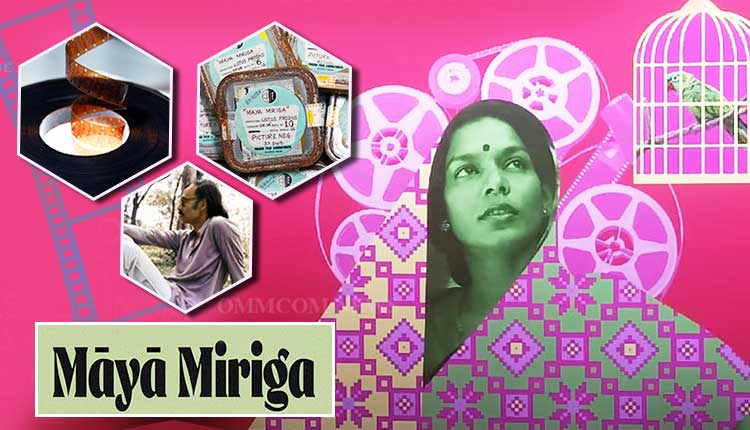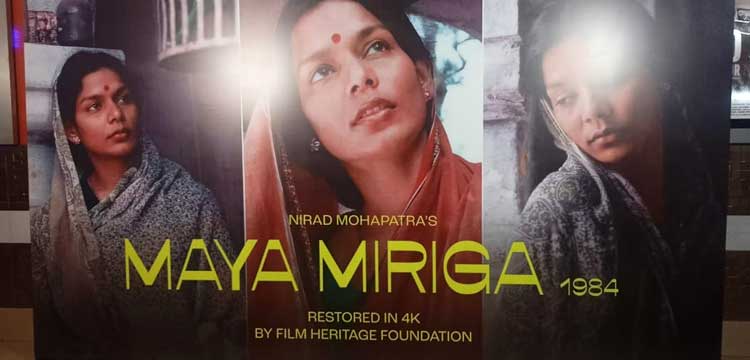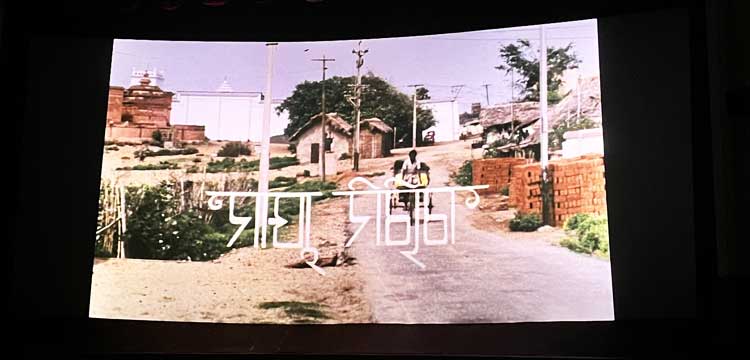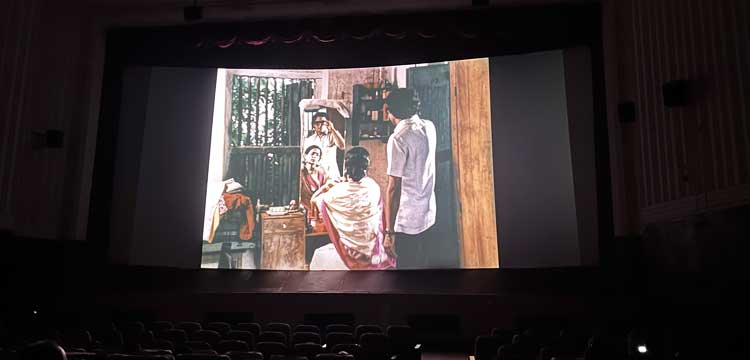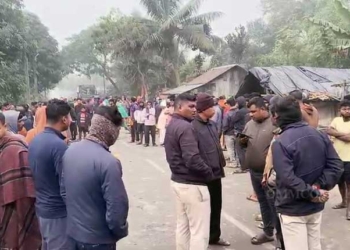Bhubaneswar: Four decades after it first graced the silver screen, Odisha’s landmark film Maya Miriga (The Mirage, 1984), directed by the late Nirad Mohapatra, made a triumphant return to the theatres on Thursday evening with a special screening of its newly restored 4K version at Keshari Talkies.
The screening, organised as part of the 10th Film Preservation and Restoration Workshop India (FPRWI), drew film enthusiasts, students, and cinema lovers who filled the auditorium to relive one of the state’s most celebrated cinematic works.
Before the lights dimmed, seasoned journalist Sampad Mahapatra and filmmaker Sandeep Mohapatra shared the emotional and technical journey behind the film’s revival. The restoration, led by the Film Heritage Foundation, took nearly three years.
The original 16mm camera negative of the film was discovered in a warehouse, badly damaged by vinegar syndrome, mould, and broken perforations. Restorers had to repair the reels frame by frame, supplementing missing portions with a 35mm print from the National Film Archive of India. The process was followed by months of painstaking colour grading and sound correction to bring the film back to life.
At exactly 6.45 pm, after a brief technical glitch in the opening minutes, Maya Miriga began to roll again to warm applause. For the next one hour and fifty-three minutes, the audience was transported back to a small Odia town of the 1980s, where the quiet, emotional world of Mohapatra’s storytelling unfolded.
The film follows Raj Kishore Babu (Bansidhar Satpathy), an elderly school headmaster who lives modestly in a joint family with his mother, wife, and five children. His sons — the dutiful Tuku, the ambitious Tutu (played by Sampad Mahapatra), the insecure Bulu, the defiant Tulu, and the youngest, Tikina — represent a generation caught between tradition and aspiration.
The family’s emotional fabric begins to fray when modernity, class, and personal ambitions creep into their lives. From the arrival of a city-bred daughter-in-law to the grandmother’s passing and the father’s quiet despair after retirement, Maya Miriga captures the disintegration of a joint family with remarkable realism.
The film’s closing moments — with Prabha (Manaswini Mangaraj – eldest daughter-in-law) refusing to light the coal oven and Raj Kishore Babu asking his grandchild, “Will you too leave us?” (Maa lo ye maa, tame palie bo, ye budha budhi dueita ku chadi tame palie bo, ye maa, maa lo) — left the audience reflecting in silence.
Even after more than forty years, Maya Miriga remains deeply relevant. It beautifully shows the value of joint families, where children grow up guided by grandparents and elders, and older family members feel loved and respected. The film also highlights how the same challenges—competition, ambition, and balancing personal goals with family responsibilities—still shape many Indian households today.
For viewers young and old, watching the restored print was not just a cinematic experience but a journey into a lost era of celluloid artistry and emotional storytelling.
When the credits rolled at 8.38 pm, the audience broke into heartfelt applause — not only for Mohapatra’s timeless film but also for the meticulous effort that rescued it from decay.




